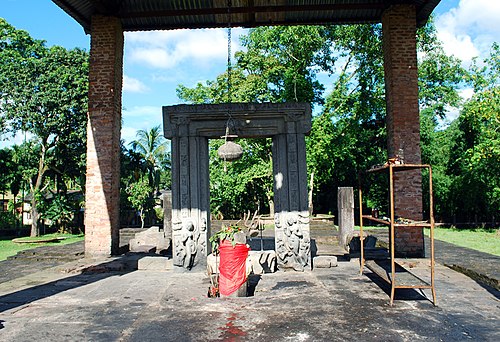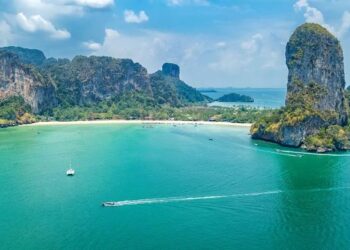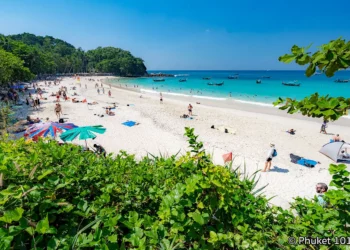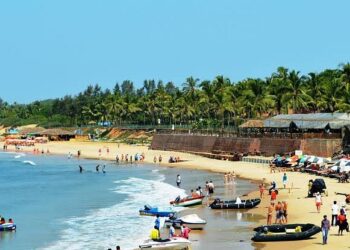In the calm little village of Da Parbatia, nearly 6 kilometers to the west of Tezpur in Assam’s Sonitpur district, rest the old remains of what was once a grand temple. Known commonly as the Da Parbatia Temple, these ruins are believed to be from around the 6th century and are counted among the oldest pieces of Hindu temple art found in Assam. Thus, attracting visitors who are interested in old history, religion, and architecture. Today, it is under the care of the Archaeological Survey of India. Though much of the structure is gone, the site still speaks of the ancient glory of Kamrup and sits quietly surrounded by Tezpur’s green fields and the gentle outline of the nearby hills.
History of Da Parbatia Temple
The history of the Da Parbatia Temple goes back to around the 5th or 6th century CE, during the later years of the Gupta era, when Kamrup stood as the eastern border of the great empire. Excavations done in 1924 revealed the most remarkable part of the site, an ancient stone doorway filled with detailed carvings. The style of this doorway closely matches that of temples like Bhumara and Nachna Kuthara in northern India, helping historians place it firmly within the Gupta period.
It is believed that the original shrine was dedicated to Lord Shiva. However, most of the ancient structure was damaged beyond repair during the powerful earthquake of 1897 that shook Assam. Later, the Ahom kings raised a new brick temple on the same site, continuing the worship and connecting two very different ages of Assamese history.
The carvings and terracotta pieces found here are thought to be from a temple complex that existed before the time of Bhaskaravarman. Based on the patterns and figures, experts say the art style belongs to around the 6th century, showing traits common in Gupta sculpture. The figures of river goddesses Ganga and Yamuna carved on the doorway resemble the artistic influence of Hellenistic (Greek) forms, while the overall decorative motifs share similarities with early Orissan temple architecture.
When the Ahom-built temple collapsed in the 1897 earthquake, the remains of the much older Gupta-era structure became visible again, mostly the beautifully carved doorway, which still stands as the main feature today. Inscriptions and scattered remains across the area further confirm that the artistic traditions of the Gupta period continued in Assam into the early medieval times. Now protected by the Archaeological Survey of India, Da Parbatia remains one of the finest examples of Assam’s link to India’s ancient architectural and spiritual heritage.
Architecture of Da Parbatia Temple
The ruins of Da Parbatia Temple show the early Gupta style, with detailed stone carvings and religious motifs. The most noticeable part is the old stone doorway, or torana, which has survived through the years. On both sides of it are carved figures of the river goddesses Ganga and Yamuna, each holding a garland and standing in graceful positions. Around them are simple floral and vine patterns, giving the stone a delicate look.
The figures seem to have some influence from Greek or Hellenistic art, seen in the folds of the clothes and the way the faces are made, but still mixed with Indian religious style. It is also thought that the doorway led into a small sanctum where a Shiva lingam was kept, but now only a stone cavity remains. Around the area, there are pieces of terracotta and wall fragments showing human figures and decorative designs similar to those in 6th-century North Indian temples.
Legends of Da Parbatia Temple
There aren’t many myths specifically about Da Parbatia, but the ruins are wrapped in the wider stories of Tezpur, often called the City of Eternal Love. Local tales connect the site to Banasura, the demon king and devotee of Shiva, whose capital, Sonitpur, included this area. Some people believe he may have built the first structures here for worship.
The carved figures of Ganga and Yamuna on the doorway are thought to represent purification and an auspicious welcome, echoing old stories of divine rivers guiding pilgrims into sacred spaces. According to Kamrup legends and texts like the Kalika Purana, this region was a center for tantric and Shaivite practices, and the temple might have been used for rituals seeking salvation or prosperity.
How to Get There
By Air: The nearest airport around is Salonibari Airport in Tezpur, about 10 km from Da Parbatia. Flights connect to Kolkata (around 1 hour) and Guwahati (about 30 minutes).
By Train: Tezpur (Dekargaon) Railway Station, 8 km away, links to Guwahati (3–4 hours), Delhi (24 hours), and Dibrugarh (7 hours). From the station, autos or taxis cover the distance in 15–20 minutes. Amguri Railway Station is slightly closer, just 2 km from the temple.
By Road: The ruins lie on the PWD road, 6 km west of Tezpur via NH-15. Buses run from Guwahati (4–5 hours, 175 km) or Kaziranga (2 hours, 80 km) to Tezpur; from there, hire an auto or taxi for the short ride to Da Parbatia.
Best Time to Visit
The months from November to May are the best for visiting, with mild weather between 15–28°C that makes walking around the open ruins easier. Monsoon season (June–October) is not recommended because the Brahmaputra can flood nearby areas. The site is open daily from 6 AM to 8 PM. Festivals like Shivratri attract visitors, but crowds remain manageable, giving a lively yet not overcrowded experience.
Nearby Attractions
Agnigarh Hill: About 5 km away, this hill is very famous for the legend of Aniruddha and Usha, and offers wide views of the Brahmaputra river along with the old fort remains.
Bamuni Hills: Located 3 km east, these ruins from the 9th–10th century have Gupta-style stone carvings and terracotta plaques, protected by the ASI.
Mahabhairab Temple: Around 6 km in Tezpur, this 10th-century Shiva temple holds one of India’s largest lingams and is connected to the stories of Banasura.
Oka Resort: About 4 km from the site, this calm lakeside spot is good for boating and picnics, offering a nice break from visiting historical ruins.











